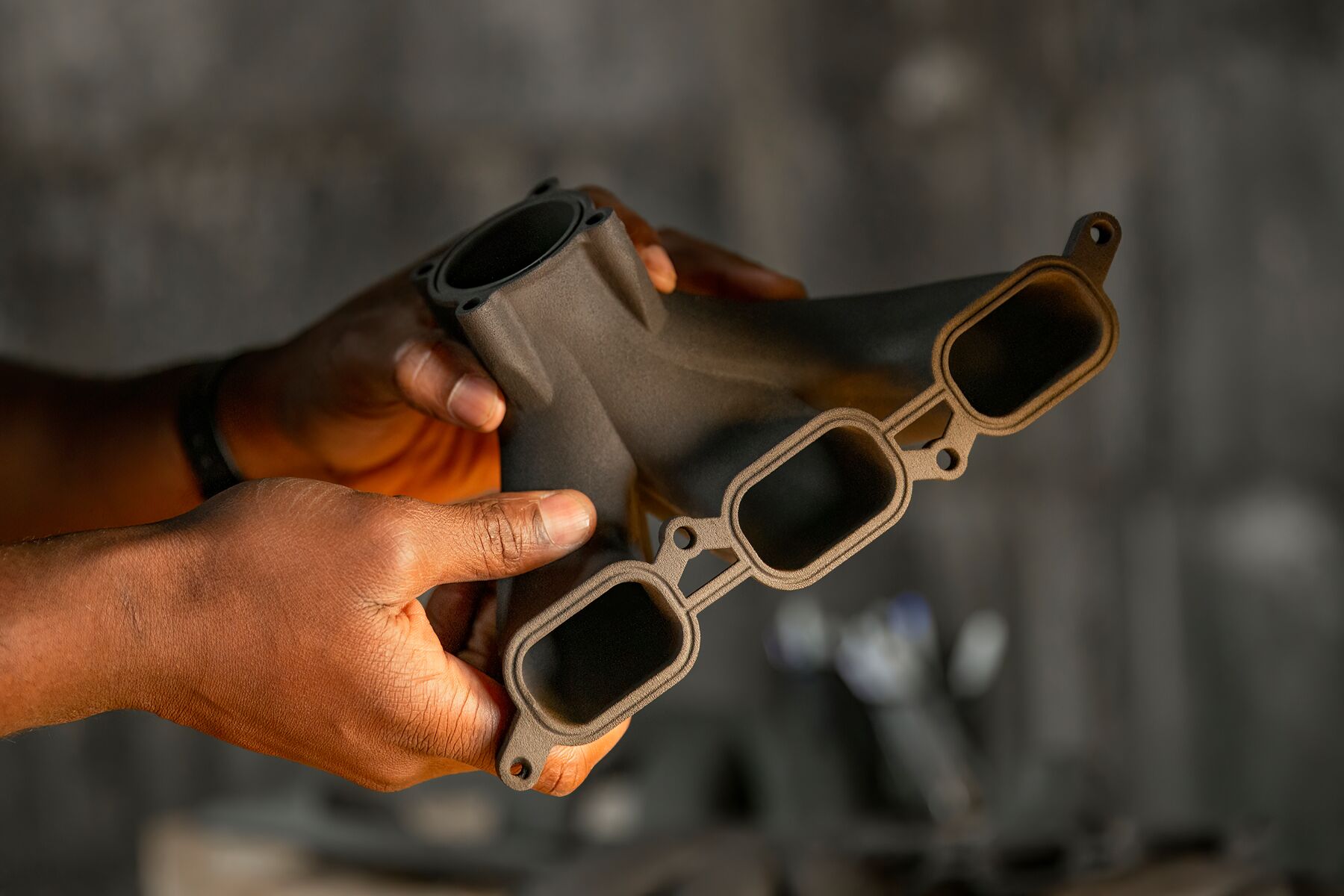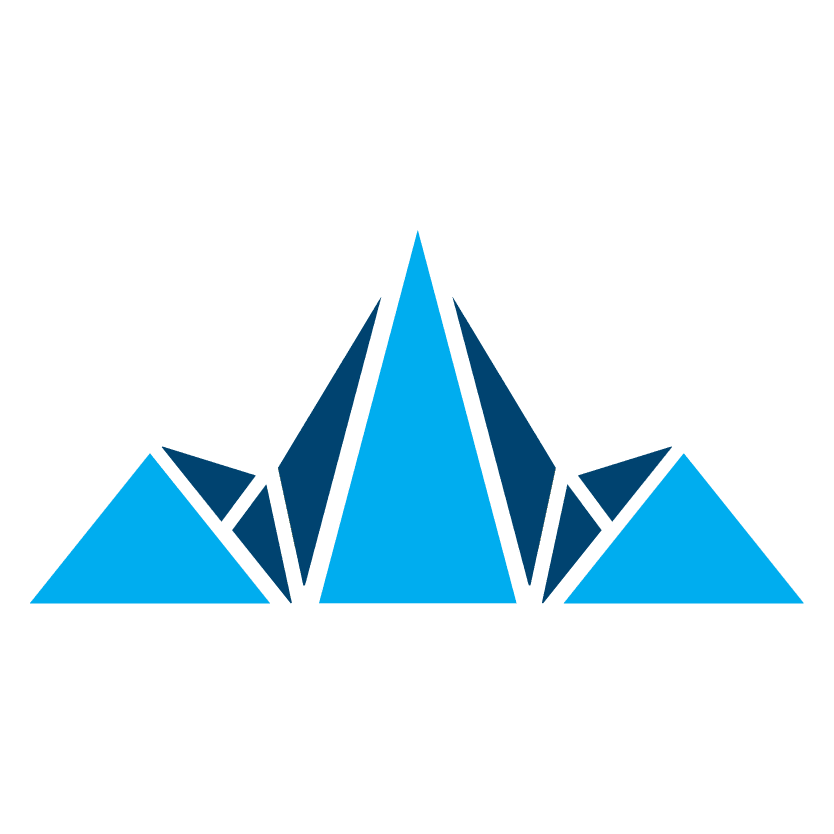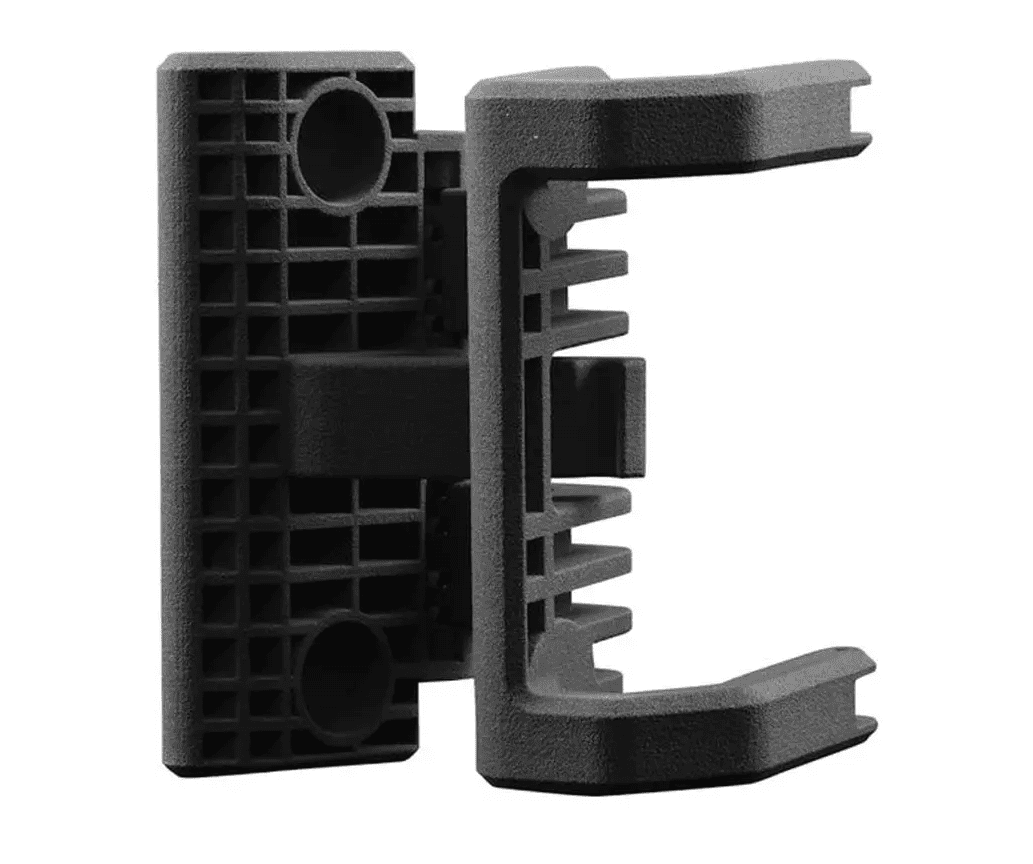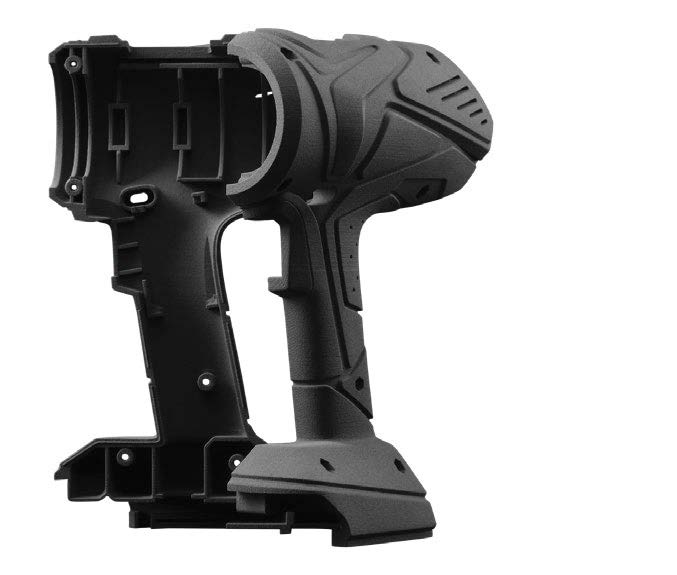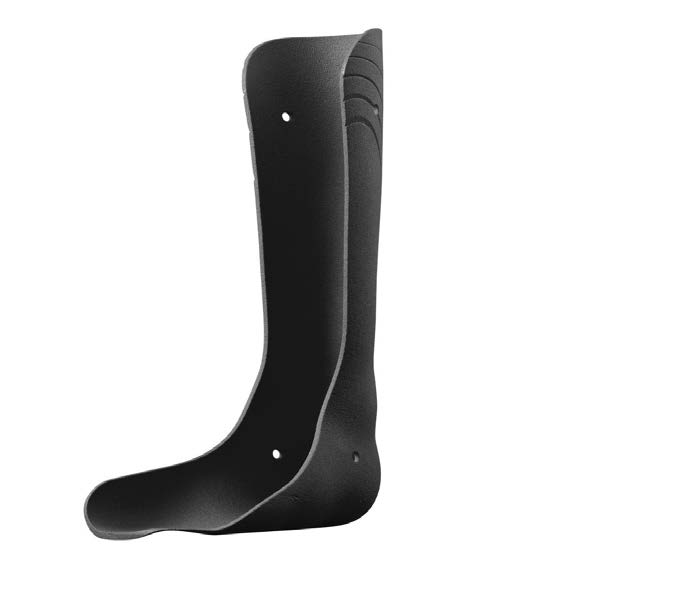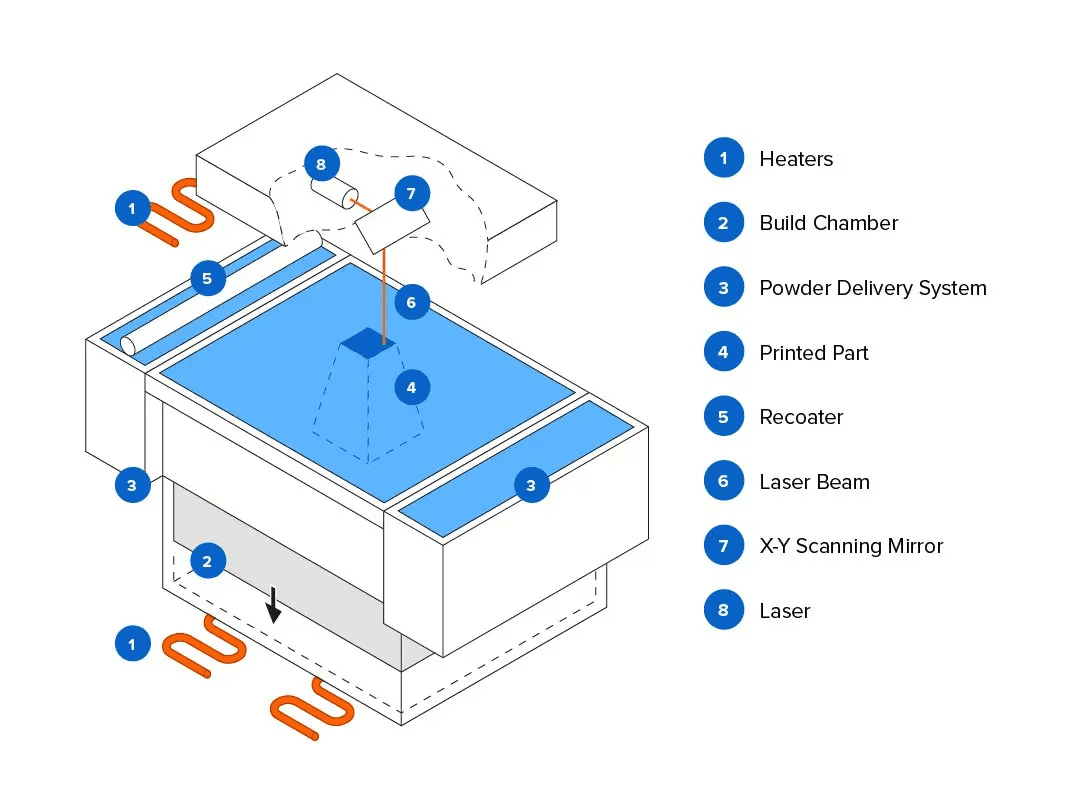The Advantages of Selective Laser Sintering (SLS)
Capabilities & Finishing Solutions for SLS
| Minimum Wall Thickness | • Vertical Walls: 0.6 mm • Horizontal Walls: 0.3 mm |
| Maximum Part Size* | • 162 mm x 162 mm x 287.6 mm • 6.3 x 6.3 x 11.3 in. |
| Minimum Feature Size | • 0.8 mm (Min. pin diameter) • 1.0 mm (Min. hole diameter) |
| Minimum Assembly Tolerances | • Features < 20 mm2 : 0.2 mm • Features > 20 mm2 : 0.4 mm |
| Lead Time | 3 – 10 business days |
*Values for Nylon 11 CF Powder
Post Processing

Vibratory Tumbling
Vibratory tumbling, also called vibratory finishing, is a widely recognized technique for enhancing various materials’ surface hardness and smoothness. Initially used for deburring metal parts after machining or pressing, it has become an essential post-processing step for many manufacturers of 3D-printed parts.

Dyeing
Dyeing is a low-cost method of colouring SLS 3D-printed parts to enhance their aesthetics while maintaining mechanical properties. Whether you need a small batch of coloured parts or Pantone-match high-throughput production, dyeing methods exist to fit every workflow.

Painting
Painting might be preferable to dyeing when parts must be brightly coloured or matched to a specific reference. Spray painting offers the most even coverage and is easier to scale, whereas hand painting allows for more detailed work. Both acrylic and enamel paint work well on powder-printed parts.

Ceramic Coating
Ceramic coatings are applied in a thin film by spraying a polymer with ceramic additives directly onto the part. No primer is required. Ceramic-coated parts are chemically resistant and mechanically strong, and a number of colours are available.

Powder Coating
Powder coating is a dry application of polymer in powder form to a substrate material. It is applied electrostatically and cured with heat, light, or both. Powder coatings applied at lower temperatures are suitable for SLS 3D-printed parts.

Liquid Polymer
Liquid polymer coatings such as epoxy, lacquer, or polyurethane have different degrees of smoothing and chemical resistance and can be applied by dipping, brushing, or spraying. They can be clear, tinted or opaque.

Vapour Smoothing
Vapour smoothing suits complex SLS-3D-printed parts with internal channels or other negative features. This finishing process bathes the parts in vaporized chemical solvents, leaving a smooth, glossy shell around them.

Polishing
Media polishing, such as glass, sand, or plastic, is used to smooth out surface roughness and porosity. This finishing step’s end results are similar to vibratory tumbling. For a quicker process, the Formlabs Fuse Blast system can reduce processing time by up to 15 minutes instead of 2 hours as tumbling.
Applications
Materials
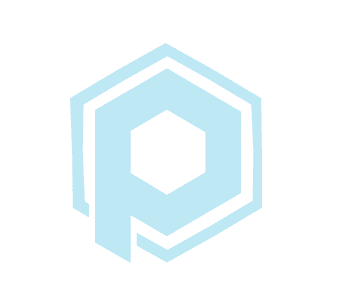
PA 2200
Material: SLS Polyamide Powder
PA 2200 is a fine powder based on polyamide 12 characterized by higher crystallinity and melting points than standard polyamide 12. It also contains stabilizers against heat and oxidation.
Full Description
- Parts made with PA 2200 are durable white parts that are highly balanced in strength, rigidity, and chemical resistance. PA 2200 has food contact approval.
Specs
- Colour — White
- XY-Axis
- Tensile modulus — 1650 MPa
- Tensile strength — 48 MPa
- Strain at break — 18%
- Thermal properties
- Melting temperature (20°C/min): 176°C
- Physical Properties
- Density: 930 kg/m³
DISCLAIMER
The material properties provided herein are for reference purposes only. Actual values may vary significantly as they are
dramatically affected by part geometry and process parameters.
Application
- Functional prototypes
- Qualified series production parts
- Production equipment like grippers, jigs and fixtures
- Spare parts like brackets or covers, e.g., in the automotive industry
- Functional parts for prototyping that include hinges or threads
- Medical applications
- Surgery cutting guides and bone models for the medical industry
- Consumer Goods
- Eyewear in the consumer goods industry
Technology/Process
- Selective Laser Sintering (SLS)

PA 606-FR
Material: Fire Retardant Nylon
PA 606-FR is the only commercially available Fire Retardant Nylon 12 that meets the FAR 25.853* 60-second burn specification (Federal Aviation Administration – FAA standard).
Full Description
This fire-retardant nylon material gives a great smooth surface finish to your 3D-printed parts, offers fine-feature resolution and ensures accurate, repeatable part quality.
*FAR 25.253 is a Federal Aviation Administration (FAA) standard for determining the flammability characteristics of materials & components used in the aircraft.
Specs
- Colour — Dark Grey
- Bulk Density — 0.46 g/cm3
- Sintered Part Density — 1.02 g/cm3
- Heat Deflection Temperature
- at 1.82 MPa — 95 °C
- at 0.45 MPA — 180 °C
- Ultimate Tensile Modulus (XY) — 48 MPa
- Tensile Modulus (XY) — 1700 MPa
- Flexural Modulus (XY) — 1500 MPa
- Elongation at Break (XY) — 24%
- Izod Impact Strength (XY)
- Notched — 32 J/m
- Unnotched — 336 J/m
- Hardness, Shore D 73
- Flammability 60-second Burn — Pass
DISCLAIMER
The material properties provided herein are for reference purposes only. Actual values may vary significantly as they are
dramatically affected by part geometry and process parameters.
Application
- Aerospace and automotive ducts
- Snapfit components and multisectional bonding requirements
- Prototypes requiring durability, accuracy and end-use functionality
Technology/Process
- Selective Laser Sintering (SLS)

PA 614-GS
Material: 40% Glass-Sphere-Filled Nylon 12
PA 614-GS is a 40% glass-sphere-filled Nylon 12 SLS material formulated for easy processing that features long-term wear resistance, good stiffness and mechanical properties, as well as high recyclability.
Full Description
PA 614-GS is an odourless, light grey SLS powder optimized as a drop-in replacement for comparable Glass-Sphere-Filled Nylon 12’s.
Specs
- Colour — Light Grey
- Bulk Density — 0.63 g/cm3
- Sintered Part Density — 1.22 g/cm3
- Heat Deflection Temperature
- at 1.82 MPa — 96°C
- at 0.45 MPA — 157°C
- Ultimate Tensile Modulus (XY) — 51 MPa
- Tensile Modulus (XY) — 3200 MPa
- Flexural Modulus (XY) — 2900 MPa
- Elongation at Break (XY) — 9%
- Izod Impact Strength (XY)
- Notched — 65 J/m
- Unnotched — 144 J/m
- Dielectric Constant — 3.7 (ASTM D150)
- Chemical Resistance — Alkalines, hydrocarbons, fuels, solvents
DISCLAIMER
The material properties provided herein are for reference purposes only. Actual values may vary significantly as they are
dramatically affected by part geometry and process parameters.
Application
- Automotive engine components
- Mold and tooling applications
- Complex geometries and rugged applications
Technology/Process
- Selective Laser Sintering (SLS)
